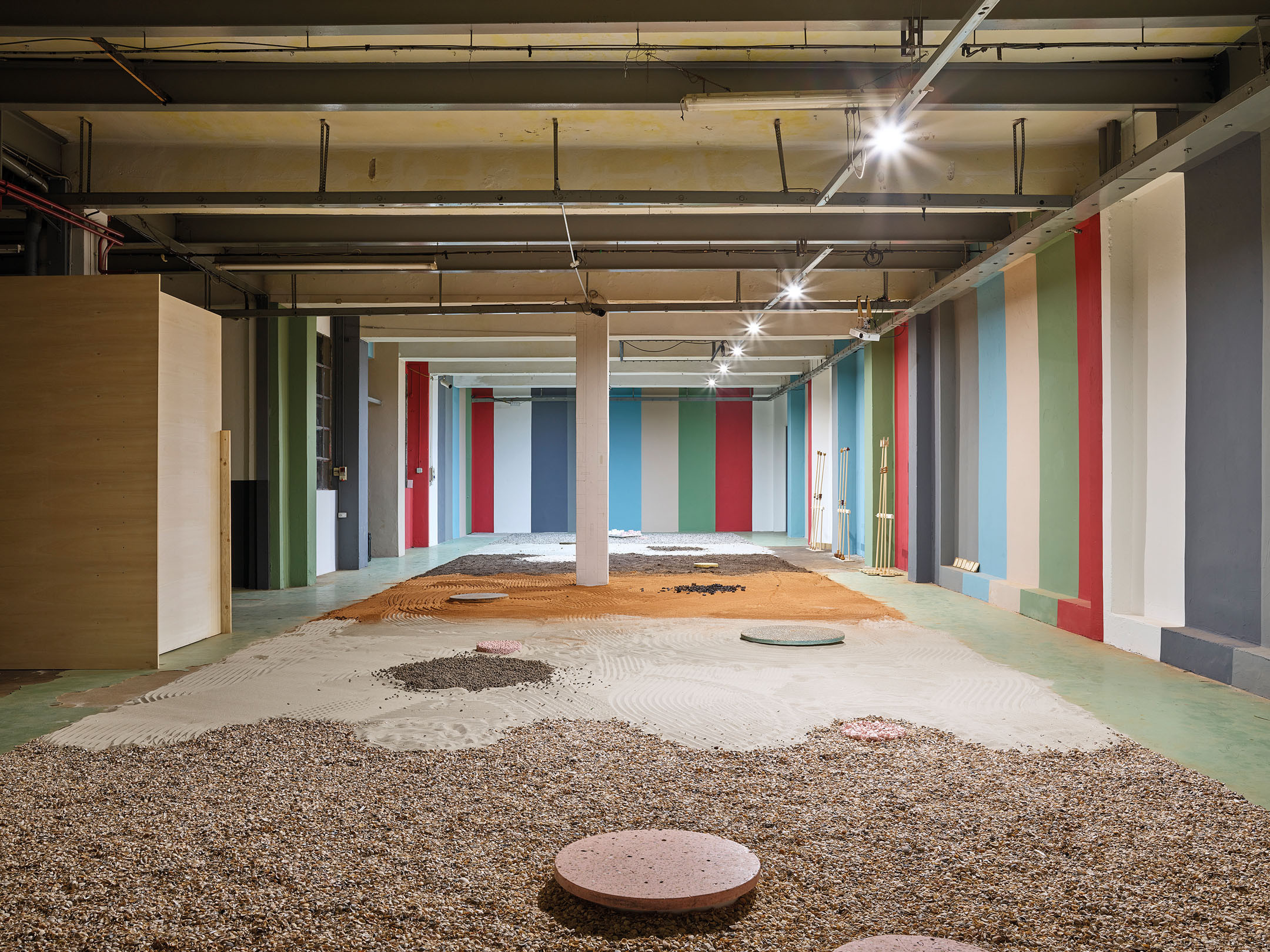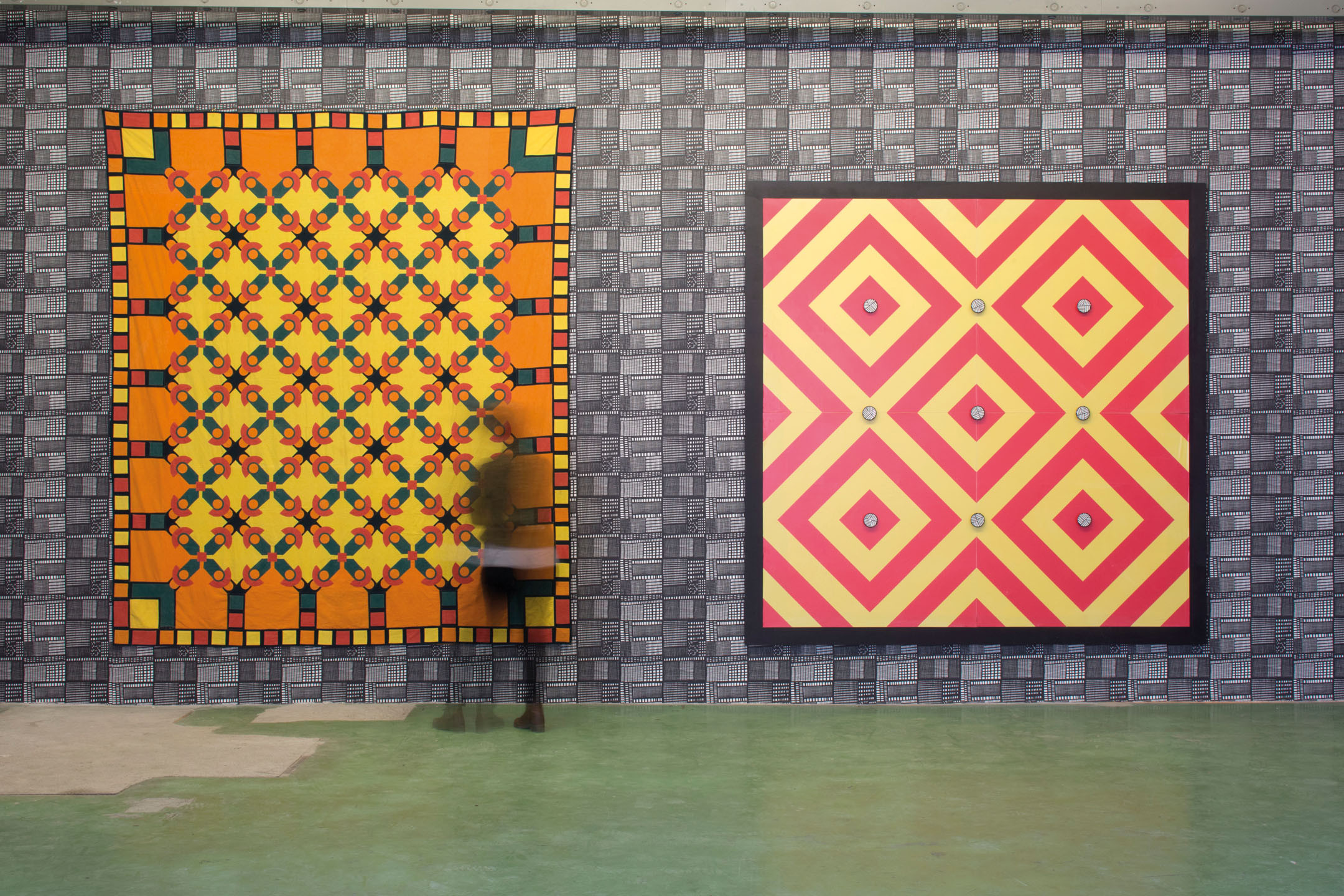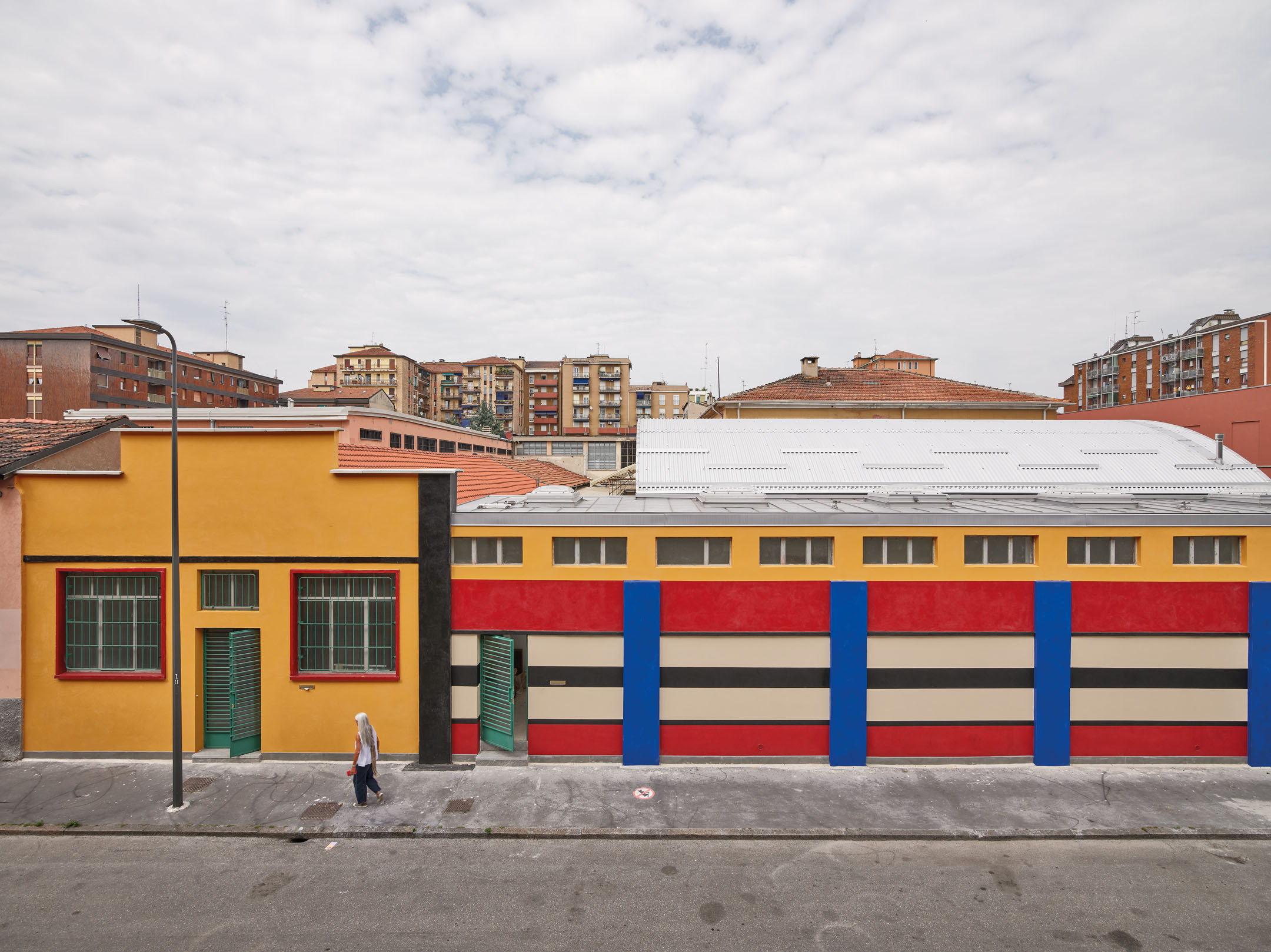
Milan’s via Assab is named for the port city on the Red Sea in what is now Eritrea, which was Italy’s first colony, and became home to many thousands of settlers. It’s on the edge of the gritty via Padova neighbourhood, which in an appropriate turn of fate has become home to a wave of migrants from the global south. It is a place where you will find restaurants such as Las Casita Gastronimia Boliviana, the Asian African Market and the Havana grocery store, along with massage parlours and second-hand clothes shops. It is also where Elena Quarestani turned what had been Grafiche Editoriali Ambrosiane – a printing plant established by her father – into Assab One, a new kind of arts space to provide a platform for a wide range of experimental visual culture. Since 2002 she has been curating a sequence of exhibitions that bring art, design and architecture into the same spaces. In 2018 for example, George Sowden (the Yorkshire born industrial designer and Memphis member), Chung Eun-Mo (a Korean artist), and Bijoy Jain (of Studio Mumbai) each took over a section of the huge interior. The transformation has been signalled by Nathalie du Pasquier’s repainting of the exterior, otherwise the simple industrial buildings grouped around a courtyard have been left very much as they were. Quarestani runs the project as a frugal not-for-profit with a handful of staff. She has rented space within the complex to, among others, the FormaFantasma studio when they moved back to Italy from the Netherlands, which helps cover some of the costs. It has become an essential venue on the Milan circuit during the city’s design week.

This year Giacomo Moor is organising Design for Communities, a project that will serve as a charitable enterprise aimed at slum dwellers, alongside work by two Swiss designers, Stephan Hürlemann and Jörg Boner, and a group of students from ECAL, the Lausanne design school.
